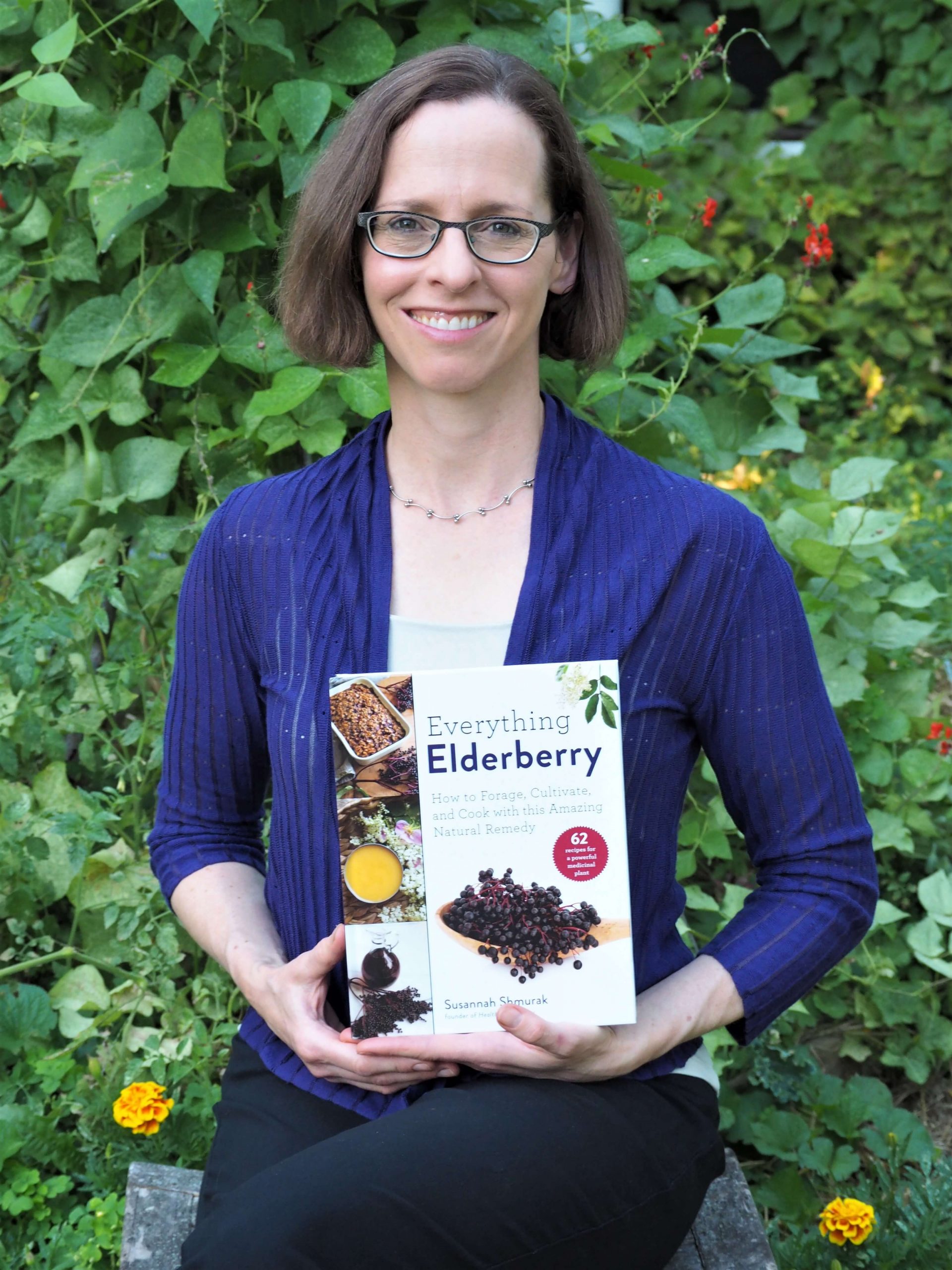Last Updated on January 26, 2024
Not sure how to develop healthy eating habits? There’s a lot of conflicting nutrition advice out there. Here’s the lowdown on what top nutrition experts tell us we need to know to make healthy eating choices.
Healthy eating doesn’t have to be complicated! Just use these basic, common sense principles — healthy eating habits simplified!

If you’re confused by all the newest fads purporting to have the last word on what it means to eat healthy, you’re not alone. Dabbled in paleo, vegan, or raw, and still aren’t sure what’s best, or even realistic, for you?
Nutrition advice has changed a lot in the last several years. Gone are the days of avoiding fat. Most nutrition experts no longer see carbs as the enemy, but think we eat far too many of them, and not the right kinds. There’s still some controversy about grains.
If you’re looking to develop healthy eating habits and are overwhelmed by the gazillion reports on so-called superfoods and foods you’re told you shouldn’t touch with a ten-foot pole, here’s the digest version (sorry, bad pun) of the latest balanced nutrition advice.
These 5 practical principles for healthy eating should have you covered.
Healthy Eating Habits: Eat Real Food
Sounds pretty basic, but the average American diet includes surprisingly little real food. What do I mean by real food? The term was popularized by Michael Pollan’s 2008 book, In Defense of Food, the sage advice of which boils down to these memorable dicta: “Eat food. Not too much. Mostly plants.”
By “food,” Pollan means things that did not begin as compounds derived in chemistry labs, things your grandmother would recognize as food, which excludes never-seen-in-nature-orange snack chips and most protein bars. Packaged, processed stuff may be convenient, but it’s generally not very healthy (and generally costs more).
When you eat things in their natural state, you’re getting all the nutrients they can provide. In highly-processed food, on the other hand, these nutrients are largely stripped away, leaving you only calories that do little to promote your health.
So as much as possible create meals and snacks from real ingredients (more on what below). When you do choose packaged food, check the label for ingredients you recognize as food, rather than long, unpronounceables reminiscent of chem class. And opt for “real” fats as well, like olive and coconut oil rather than margarine and fake butter spreads.
Healthy Eating Habits: Focus on Plants
Fresh vegetables and fruits should be the first things you reach for when preparing meals and snacks. They contain important anti-inflammatory compounds that appear to be connected to reduced risk for numerous chronic diseases. Here are some of the top superfoods to consider if you want to add more of these beneficial compounds to your diet.
And they make your gut microbes very happy, which turns out to be pretty important. (Read more on cultivating a healthy gut here.)
Only a small fraction of the U.S. population gets the full 9 servings of fruits and veggies we’re supposed to eat every day. That “and” is important, by the way – don’t just eat fruit and think you’re set.
An easy way to get closer to this goal is to start each meal with a fruit or a vegetable, like a grapefruit or berries with breakfast, a salad or some carrots at lunch and dinner, and so on. It’s really easy to want to snack on produce when you belong to an amazing CSA like I do.
A red pepper, a bowl of sweet cherry tomatoes, or some fresh-picked green beans make delectable snacks in the height of summer. Have a little fruit for dessert and add veggies to snacks and smoothies. Make your main course plant-based as often as possible, featuring things like an easy vegetarian stir fry and homemade soup.
Check out my e-book, The Savvy Guide to Eating Healthy on a Budget for some easy, inexpensive plant-based meal ideas and 14 proven strategies for making healthy food affordable.
This vegetarian chili and this recipe for an almost no-cook dinner should help you get started.
And don’t fret about getting enough protein — some judicious choices of the best vegan protein sources will ensure you’re getting plenty.
If you need some help putting together plant-based meals, check out Purple Carrot, a service delivering the ingredients you need for delicious vegan meals right to your door. They’re offering $20 off your first order — just click the banner below.
Need some good ideas for recipes featuring veggies? I’ve been collecting them! Check out
- 50+ Delicious and Healthy Zucchini Recipes
- 50+ Healthy and Delicious Bean Recipes
- 30 Mouth-Watering Sweet Potato Recipes
- 25 Kale Recipes to Make You Crave Kale
- 75 Healthy Pumpkin Recipes to Celebrate Fall
- Healthy Spaghetti Squash Recipes You Need to Try
Here’s more information on eating seasonally to make getting in your servings of seasonal fruits and veggies a delight.
Healthy Eating Habits: Go Whole*
Refined white flour has been linked to chronic inflammation, which is implicated in a wide range of diseases ranging from diabetes to arthritis.
Look for the word whole (as in “whole wheat”) in the ingredient list; if it just says “wheat flour,” they’ve taken out the healthful parts of the grain and left you with nothing but empty calories.
When you eat whole grains rather than their refined counterparts, besides protecting your health, you’ll likely feel fuller and eat less. Whole grains are even more nutritious if they’ve been prepared by soaking and/or sprouting. More products made from sprouted whole grains are popping up every day.
*The jury’s still out on whether we should try to skip grains altogether, and many people report feeling better when they don’t eat them (though that may be because they are avoiding refined grain flours). If you are avoiding grains or gluten, just be sure that whatever you’re substituting is whole rather than refined.
Gluten-free is not the same as good for you; many processed gluten-free products are just refined gluten-free flour with lots of added sugar.
Healthy Eating Habits: Avoid Chemicals
You’ll do this to some extent by eating real food. Keeping neon-colored fruity cereal out of the cupboard and skipping diet sodas and artificially-flavored and colored drinks will go a long way to keeping chemicals out of your body.
Take it a step further and buy organic whenever you can. There are thousands of chemicals used on conventionally-grown food, and we still don’t have definitive data on their possible health effects. It’s smart to avoid them (especially the infamous “dirty dozen”) when possible.
But if it’s a choice between conventional and no produce at all, dietitians still advise opting for the fruits and veggies. Getting your 9 servings a day is considered more important than avoiding pesticides, so do what you gotta do.
But wash conventional produce well, and look for produce with the lowest levels of pesticide residue, toward the end of the Environmental Working Group’s ranked list. More info and tips on avoiding pesticide residues here.
**Don’t forget your water! These days our water supplies are filled with all manner of chemicals, including pesticides, pharmaceuticals, and numerous known carcinogens. A good water filter is an important investment in your health, and some really good ones are very affordable.
Read more: How to Choose a Water Filter and Why You Need One
Healthy Eating Habits: Cut Back on Sugar
We’re hard-wired to like sweet things, and a sweet treat now and then won’t make or break your diet. But manufacturers of processed foods have slipped sugar in all sorts of products that really don’t need them, like salad dressings, soups, and pasta sauces.
These are easy places to start when you’re trying to cut down on sugar, since the unsweetened versions taste just as good or better. Be on the lookout for all the different types of added sugar, including corn syrup, cane syrup, brown rice syrup, fructose, dextrose, maltose, and sucrose.
Other places you might be getting sugar you don’t really need and probably won’t miss: sweetened yogurt, granola bars, and other baked goods. Plain yogurt with fruit tastes great (especially easy, money-saving homemade yogurt!), and you can make your own granola, quick breads and muffins and control the amount of sugar yourself.
If you want a muffin as part of a meal rather than dessert, make yours with whole-grain flour and reduce the amount of sugar called for. You can also try substituting unsweetened applesauce for all or part of the sugar.
Here’s a pumpkin cookie recipe using only bananas for sweetness! Or check out some of the amazing recipes for desserts made with zucchini. Healthy treats are an important part of a real-food eating strategy, or you’ll have trouble sticking with it.
Once you’ve retrained your palate, you’ll never miss this insidious “anti-nutrient” linked to heart disease, diabetes, and a range of other health conditions. The American Heart Association recently recommended that women restrict added sugar from all sources to just 100 calories per day (150 for men). That’s significantly less than one average can of sweetened soda.
Here’s more on how much sugar per day is OK.
Healthy Eating Habits: The Takeaway
Healthy eating doesn’t have to be complicated, and you don’t have to stress out over every bite you put in your mouth.
Following these simple rules will take your diet a long way toward healthy, and you’ll likely find you feel and look better. You will probably also lower your risk for a number of health conditions caused by the inflammatory effects of a processed, low fiber, high sugar, low nutrient diet.
More good news: Healthy eating doesn’t have to be expensive!
Pin these healthy eating tips to save for later!
And if you want lots more healthy living tools and recipes for healthy eats from across the blogosphere, check out some of the inspiring ideas on my Pinterest boards.
References and Further Resources
Harvard School of Public Health Diet Recommendations
James Hamblin, MD, “Science Compared Every Diet and the Winner is Real Food” (Atlantic, March 2014)
(Hamblin references David L. Katz of the Yale-Griffin Prevention Research Center, an oft-cited voice of reason in the often fanatic nutrition wars. Here are links to a number of his recent articles. I’m also a fan of the sane and balanced advice “Nutrition Diva” Monica Reinagel offers. Check out her informational site and awesome podcasts.)
Health.gov Scientific Report of the 2015 Dietary Guidelines Advisory Committee
What have you done to clean up your diet already? What are your biggest challenges in healthy eating? Leave a comment below.
Disclaimer: I’m a healthy food enthusiast, not a registered dietitian. Content on this website is intended for informational (maybe inspirational!) purposes only and is not meant to provide personalized medical advice. I draw on numerous health sources, a few of which you will find in the reference list above. Please consult them for more information and a licensed professional for personalized recommendations.

Susannah is a proud garden geek and energy nerd who loves healthy food and natural remedies. Her work has appeared in Mother Earth Living, Ensia, Northern Gardener, Sierra, and on numerous websites. Her first book, Everything Elderberry, released in September 2020 and has been a #1 new release in holistic medicine, naturopathy, herb gardening, and other categories. Find out more and grab your copy here.



 Hi, I'm Susannah, a garden geek, energy nerd, and fan of healthy food and natural remedies. Need some simple, practical solutions for living healthier and greener? You've come to the right place! More about me and my green projects
Hi, I'm Susannah, a garden geek, energy nerd, and fan of healthy food and natural remedies. Need some simple, practical solutions for living healthier and greener? You've come to the right place! More about me and my green projects